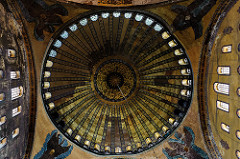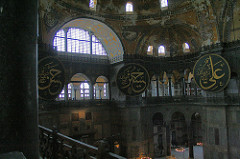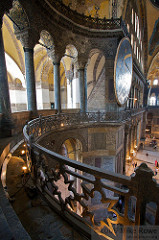I chose Byzantine science for my topic, though it does fall more into a cluster. This is because Byzantine science includes medicine, mathematics and military weaponry well as other aspects. The Byzantine were on of the firsts people to compile medical information into textbooks standardizing the way they treated the ill. Byzantines also adopted a non-military hospital for treating the sick which wasn’t as common. Along with this plethora of knowledge was the complex works of ancient Greek mathematicians. It’s this information that was studied and in part is credited to Hagia Sophia’s timeless structure.
During this time (as is still the case) science was devoted larely to the military and how it could aid in both defense and conquest. The Byzantine used an incindary weapon called ‘greek fire’. A complex mixture of hydrophobic materials that could be used in naval warefar because of its ability to burn on water. The Byzantine valued knowledge and as such gathered their information to become a prominent port of information to the western world.
 Which raises the question what does this have to do with Hagia Sophia. Well to start with Byzantine science , a collection of scientific observations from cultures like the Greek and more, were responsible for a large influence of the Renaissance. As well as providing ancient Greek texts on astronomy and mathematics they were a prominent source of scholars. Not only did Byzantine science influence a major cultural moment but also the architects responsible for building Hagia Sophia.
Which raises the question what does this have to do with Hagia Sophia. Well to start with Byzantine science , a collection of scientific observations from cultures like the Greek and more, were responsible for a large influence of the Renaissance. As well as providing ancient Greek texts on astronomy and mathematics they were a prominent source of scholars. Not only did Byzantine science influence a major cultural moment but also the architects responsible for building Hagia Sophia.
Hagia Sophia. Digital image. Flickr. Yahoo!, 2012. Web. 08 Feb. 2016.




